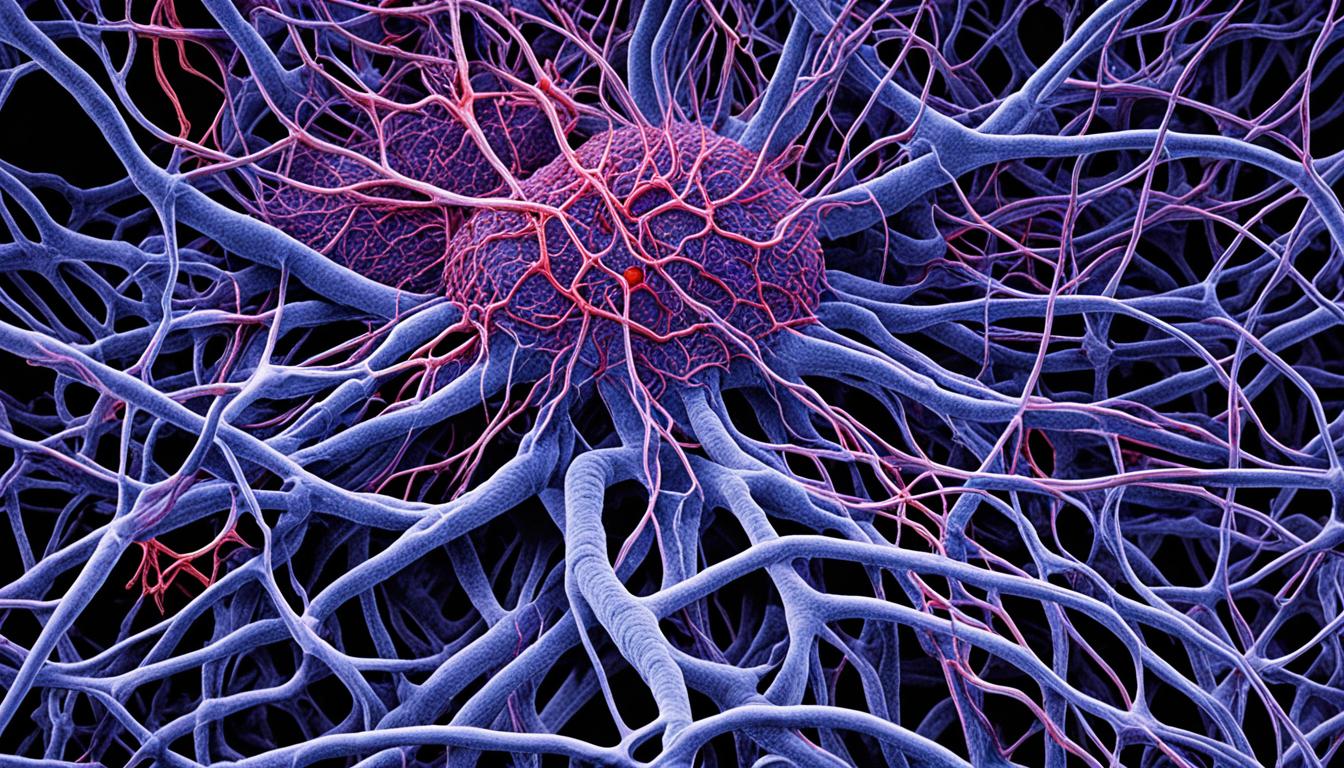Cavernous malformations, or CCMs, are unusual blood vessel issues. They happen in the brain or spinal cord. These blood vessels are thin and packed tightly, filled with clotted blood. They can be small, less than half an inch, and have genetic links in about 20% of cases.
Symptoms of CCMs can differ and include seizures, headaches, and weakness in limbs. Numbness, difficulty talking, and vision issues are also signs. Sometimes they lead to brain or spinal bleeding, a serious problem. MRI scans help doctors see if CCMs are present.
Surgery is often the first choice to treat CCMs. But now, stem cell therapy is becoming a hopeful option. It works to fix damaged blood vessels with the help of stem cells. Thailand leads in this area, providing cutting-edge stem cell treatments for diseases like CCMs.
Key Takeaways:
- Cavernous malformations are irregularly formed blood vessels that can occur in the brain or spinal cord.
- CCMs can be accompanied by symptoms such as seizures, headaches, weakness, numbness, and vision changes.
- Genetic mutations play a role in approximately 20% of CCM cases, with the remainder being sporadic.
- MRI is a common diagnostic tool for identifying CCMs.
- While surgical removal is a treatment option, stem cell therapy shows promise in repairing damaged blood vessels.
- Thailand offers advanced stem cell therapy for cavernous malformations and other neurological conditions.
Symptoms and Diagnosis of Cavernous Malformations
Cerebral cavernous malformations (CCMs) affect people differently. Some may have no symptoms. Others might experience seizures, headaches, or weakness in the arms or legs.
Some could find speaking or their vision affected. Symptoms’ severity can change and might get worse with more bleeds.
Not everyone with CCMs will have a bleed or another one after the first. But, seek medical help if you notice any symptoms. A doctor should check for brain bleeding.
Doctors often use magnetic resonance imaging (MRI) for diagnosing CCMs. MRIs show how CCMs look, with their unique shape. This makes diagnosis more certain.
| Symptoms | Common manifestations |
|---|---|
| Seizures | Uncontrolled movements, unconsciousness, temporary confusion |
| Headaches | Persistent pain or pressure in the head |
| Weakness | Reduced strength in the arms, legs, or both |
| Numbness | Lack of sensation or tingling in certain areas of the body |
Doctors use both symptoms and MRIs to diagnose CCMs. Finding it early and treating it quickly is key. This can help prevent serious problems.
Causes and Risk Factors of Cavernous Malformations
Most of the time, CCMs appear without a known cause. But, around 20% are linked to family history. They come from genetic changes in KRIT1, CCM2, and PDCD10.
Getting radiation on the brain or spine can also raise your chances of getting CCMs. The exact reason for most CCMs appearing is not clear. CCMs that run in families often show up in more than one spot. They might also cause problems like scoliosis and trouble with learning.
Stem Cell Therapy for Cavernous Malformations
Stem cell therapy shows promise in treating cavernous malformations, issues in the brain or spinal cord’s blood vessels. This method uses the power of stem cells to heal and revive damaged vessels.
Stem cells are special because they can turn into different cell types. This aspect is very exciting for dealing with issues in the nervous system. They could be the key to fixing problems with blood vessels in places like the brain or spinal cord.
Thailand stands out as a top research and treatment spot for using stem cells. It’s a great place for working on conditions like cavernous malformations. The country offers high-tech facilities and is known for its work in regenerative medicine. This makes it a top pick for those seeking leading-edge treatment options.
If you or someone you know is dealing with cavernous malformations, thinking about stem cell therapy in Thailand could be a good idea. Thailand is focused on providing top-notch medical care and groundbreaking solutions through regenerative medicine. It’s a hopeful choice for those looking for ways to manage this complex issue.

